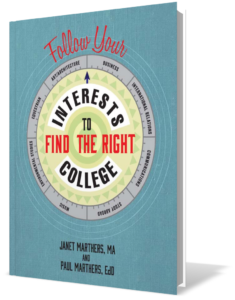Publisher Wheatmark Announces Release of New Western Novel
 Tucson, AZ – April 28, 2017 — Wheatmark, Inc. is pleased to announce the release of Beyond Bedrock by W. L. Jardine. This exciting Western tale follows the stories of three brave women as they face countless challenges.
Tucson, AZ – April 28, 2017 — Wheatmark, Inc. is pleased to announce the release of Beyond Bedrock by W. L. Jardine. This exciting Western tale follows the stories of three brave women as they face countless challenges.
The Old West is a harsh place for women, even under the best of circumstances. But when Jenny, Belle, and Beatrice find themselves fighting desperate situations beyond their control, they show a caliber of strength that only the worst of times can bring out. Jenny witnesses the gruesome death of her parents. Belle escapes Baltimore’s poverty while reluctantly leaving behind her quarantined mother. And Beatrice finds the courage to abandon her abusive father and hateful brothers.
Their stories eventually intersect in Colorado, but not before they encounter a variety dangers and colorful characters, including Native Americans, former slaves, and a young runaway. They are determined to better their lives and, in doing so, positively impact the formation of the West.
With a unique female focus, Beyond Bedrock is the debut from a compelling new voice in Westerns.
For more information about the book, or to schedule an interview with the author, please call Mindy Burnett at 520-798-0888 x100 or email support@wheatmark.com.
About the Author:
W. L. Jardine (aka Wendy Krause) taught industrial arts at the high school level for several years. She is a lover of history and stories that bring out the resourceful natures we are blessed with.
More About This Title:
Beyond Bedrock, ISBN 9781627874694, was released by Wheatmark, Inc. on April 28, 2017. The book has 262 pages and is being sold as a trade paperback for $13.95 and as an ebook for $6.99.
About the Publisher:
Wheatmark, Inc., founded in 1999, is a Tucson, Arizona-based publisher of trade titles that are available wherever quality books are sold worldwide. Wheatmark titles can be purchased in paperback, hardcover, or popular ebook formats. For more information, visit https://www.wheatmark.com.
Latest Autobiography a Journey of Courage
 Tucson, AZ – April 20, 2017 — Wheatmark, Inc. is pleased to announce the release of Underneath It All: A Collection of Memoirs by Margaret Hatcher. This book takes us on a journey from fear to courage through the author’s eyes.
Tucson, AZ – April 20, 2017 — Wheatmark, Inc. is pleased to announce the release of Underneath It All: A Collection of Memoirs by Margaret Hatcher. This book takes us on a journey from fear to courage through the author’s eyes.
Margaret Hatcher was a wounded, wordless child who cried when her classmates made fun of her and put on a brave face for a mother who struggled with acute depression. As life presented her with new experiences, she slowly let go of her fearfulness, becoming an acclaimed educator who won numerous national awards, a national speaker, writer, and visual artist. Underneath It All: A Collection of Memoirs shows snapshots of her evolution: Flying out of a giant tree. A Long John Silver’s out-of-body experience. Rehab with an ex-Marine. Honorable closure. Throughout, Hatcher shares her deep love of the places that formed and informed her, from a small town in Texas to the top of the San Juan Mountains in Colorado and the high deserts of Arizona.
Spanning more than seven decades, Underneath It All takes us on an expedition to discover the truth of one remarkable woman’s life.
For more information about the book, or to schedule an interview with the author, please call Mindy Burnett at 520-798-0888 x100 or email support@wheatmark.com.
More About This Title:
Underneath It All: A Collection of Memoirs, ISBN 9781627874779, was released by Wheatmark, Inc. on April 21, 2017. The book has 402 pages and is being sold as a trade paperback for $18.95.
About the Publisher:
Wheatmark, Inc., founded in 1999, is a Tucson, Arizona-based publisher of trade titles that are available wherever quality books are sold worldwide. Wheatmark titles can be purchased in paperback, hardcover, or popular ebook formats. For more information, visit https://www.wheatmark.com.
The Power of the Reviewer’s Pen
 Periodically I call one of our authors with a better-selling book and chat with them about their book marketing efforts, and what they believe is responsible for their sales success. I had one such conversation recently with Janet Marthers (janetmarthers. com), the lead author of Follow Your Interests to Find the Right College (ISBN: 9781627872621). The book is different from other college guides in that it uses students’ interests, both academic and non-academics, as the primary tool to help them navigate the college selection process, and discover colleges and opportunities that they might otherwise overlook. If you or someone you know is evaluating colleges, I highly recommend that you check out this unique book.
Periodically I call one of our authors with a better-selling book and chat with them about their book marketing efforts, and what they believe is responsible for their sales success. I had one such conversation recently with Janet Marthers (janetmarthers. com), the lead author of Follow Your Interests to Find the Right College (ISBN: 9781627872621). The book is different from other college guides in that it uses students’ interests, both academic and non-academics, as the primary tool to help them navigate the college selection process, and discover colleges and opportunities that they might otherwise overlook. If you or someone you know is evaluating colleges, I highly recommend that you check out this unique book.
Follow Your Interests to Find the Right College was published in December of 2015. In March 2016 Forbes interviewed Marthers about the book, and she noticed an immediate spike in sales on Amazon. Shortly thereafter Library Journal published a positive review of the book in its March 2016 issue (to be followed in July 2016 by a review in School Library Journal.) Sales have been consistently higher for the many months since. Marthers believes that the Library Journal review played the critical role in the success of her subsequent sales and marketing efforts. These efforts primarily focused on libraries, whose buyers rely, perhaps more than on any other source, on the reviews in Library Journal and Publishers Weekly. One frustration Marthers did have was that many prominent publications that review books, like Kirkus Reviews, would not consider the book for review after it had been out a few months. This is something for authors and publishers to keep in mind. It’s often a good idea to submit a book for review well before it is published, even if that means delaying its release. In the best case a book receives a review from a prominent reviewer or publication prior to its release date and the review can be incorporated into the book’s design.
Tucson Festival of Books
Tucson Happenings
 It is that time of year again where authors, readers, and publishers take over the University of Arizona campus to celebrate books and the art of writing. March 11-12, the Tucson Festival of Books will be in full swing, and if you have never attended before then this is your year!
It is that time of year again where authors, readers, and publishers take over the University of Arizona campus to celebrate books and the art of writing. March 11-12, the Tucson Festival of Books will be in full swing, and if you have never attended before then this is your year!
Since its Tucson debut in 2009, the festival has grown to one of the most notable book fairs in the nation boasting over 350 participating authors in presentations and workshops attracting a diverse range of attendees. Whether you are looking for programming for children and teens, panels by best-selling and emerging authors, culturally diverse programs, exhibitor booths or a variety of food options, there is something for everyone at the Tucson Festival of Books.
This year, Wheatmark will be a featured exhibitor with several of our own authors joining us for the weekend. If you are planning to attend, feel free to come visit us at booth 137 near the UofA student center. Below is the list of authors that will be present at our booth.
We look forward to seeing you there!
Tucson Festival of Books: Wheatmark, Booth 137
Saturday, March 11
9:30 AM Ruth Marston
9:30 AM Chuck Preble
10:30 AM Rae Jacob
10:30 AM Cheryl Sherman
11:30 AM Stuart Harris
11:30 AM Michelee Cabot
12:30 PM James McNiven
12:30 PM Mary Anne Civiok
1:30 PM Carolyn Masters
1:30 PM Greg Vogt
2:30 PM Angela Bell Julien
2:30 PM Greg Fournier
3:30 PM Jerry Imhauser
3:30 PM Marj Charlier
Sunday, March 12
10:30 AM Heidi Yribar
10:30 AM Grael Norton
11:30 AM Julia Hilton
11:30 AM Fred Fox
12:30 PM Robert Kahl
1:30 PM Barbara Jaquay
1:30 PM Cy Vaughn
2:30 PM Duke Southard
2:30 PM Martha Damek
Crime: Truth and Fiction
Fans of crime fiction and true crime: I’d like to draw your attention to two award-winning authors who’ve recently published two exciting new books.
Duke Southard is a First Place winner of the 85th Annual (2016) “Writer’s Digest” Writing Competition, a finalist of the 2016 Tucson Festival of Books Literary Awards, and a finalist of the 2015 Indie Publisher Next Generation Book Awards, to list just some of his accolades.
Southard’s new book Cracks in the Wall (Wheatmark, 2016) is a suspense novel in the Parker Havenot Police Detective Series. The plot centers on the murder of a young mother of three in a quiet suburban town in what appears be an open-and-shut case. Detective Havenot, however, is not so sure, suspecting that the key to the murder lies somewhere in the victim’s past. This book is a fantastic fast-paced read from the first page to the surprising ending.
Gregory A. Fournier is a Finalist Award winner of the 2011 USA Best Books contest, and an Honorable Mention winner of the 2011-2012 Los Angeles Book Festival, in both cases for Zug Island: A Detroit Riot Novel (Wheatmark, 2011).
Fournier’s new book Terror in Ypsilanti: John Norman Collins Unmasked (Wheatmark, 2016) is a true crime book about the infamous 1967–69 Michigan Murders in which serial killer John Norman Collins brutally murdered a series of young women on, or near, the campuses of Eastern Michigan University and the University of Michigan, until his capture and conviction for the murder of Karen Sue Beineman. The other murders attributed to Collins never went to trial, with one exception, and became cold cases. Fournier tells the stories of these other victims, recreates the infamous trial that took Collins off the streets, and details Collins’s time spent in prison. Fournier’s carefully researched book is based on hundreds of vintage newspaper articles, thousands of police reports, and countless interviews. Not to be missed.
Both authors are also active bloggers who blog about true crime, writing, and other topics. Their blogs can be found at dukesouthard.com and fornology.com. Here’s hoping both authors keep writing great books, blogging, and winning awards!
New Year, New Digs!
Nothing spells the new year and a bright outlook than a move into newly remodeled offices in the city center. We recently bid farewell to our old corporate center by Tucson’s Rillito River on River Road near Campbell Avenue. While it was a great and easily accessible location for many of our local authors, many of you had found it difficult at first to find our exact suite in a myriad of similar-looking buildings and suites!
Well, we’re in a corporate jungle no longer!
Our publishing company, now in its 17th year, just moved a couple of miles south to Speedway Boulevard near Campbell Avenue by the Aloft Hotel near the University of Arizona.
Our new address is 2030 East Speedway Boulevard, Suite 106, Tucson, Arizona 85719, located in the Sun Building. You will no longer get lost looking for our suite, I can guarantee that!
If you’re local or are visiting Tucson, we look forward to showing you around. Here are some pictures for you in the meantime!


From all of us at Wheatmark, we want to wish you and your family Happy Holidays, a Merry Christmas, and a prosperous 2017!
What Is Hybrid Publishing?
There’s a lot of buzz about hybrid publishing in the writing and publishing communities, coupled with an equal amount of misunderstanding and confusion. Not surprising. As the name suggests, hybrid publishing is a cross between traditional and indie publishing, incorporating some features of each. There are a wide variety of hybrid publishing business models, depending on which features are incorporated. Here are some of the features to watch for when evaluating a hybrid publisher:
Curation
The best hybrid publishers do the high-level editorial work that traditional publishers do: Screening submissions and accepting only those of merit with a reasonably large potential market, and working closely with authors on design and editing to create the best books possible.
Financing
Nearly all hybrid publishers require the author to finance all or part of the publishing, editorial, and marketing costs, usually through the payment of upfront fees.
Rights
Some hybrid publishers want an exclusive license to sell your book, and all subsidiary rights. Others allow only want a nonexclusive license, and allow you to retain all of your subsidiary rights.
Distribution and Sales
All published books, traditional, hybrid, or indie, have access to major online retailers like Amazon.com. But, some hybrid publishers offer distribution to the trade (brick-and-mortar bookstores, gift shops, special markets, etc.) through distributors like Ingram Publisher Services (IPS), a subsidiary of Ingram Book Group. A distributor usually has curated catalogs of books and a sales force that calls on accounts. Still other hybrid publishers have their own catalogs and salespeople.
Marketing
Many hybrid publishers provide publicity and platform building services for their authors. Often these services are provided for every book they publish as part of an overall suite of publishing services.
To my mind, curation is the most important thing to look for in a hybrid publisher, as it provides the branding that distinguishes your book from the sea of indie published books on CreateSpace or iUniverse.
I talk more about these exciting new publishing models in a recently released Authors Academy webinar. In it you’ll discover whether hybrid publishing is right for your project, the different varieties of hybrid publishers, and how to work with hybrid publishers.
If you’re a member of the Authors Academy, just log in and find the webinar “What Is Hybrid Publishing?”
If you’re not yet a member, visit authorsacademy.com/authors to join now!
‘Tis the Season . . . for Author Ordering
It is hard to believe that another year is already winding down, which means that the holiday season is right around the corner. As the hustle and bustle of life begins to ramp up the closer we approach Thanksgiving and Christmas, it is normal to try and get ahead on our holiday shopping. The quest to find the perfect gifts for the ones we love is often an annual tradition of fighting traffic, battling unending lines and searching for the best deals, while never feeling completely satisfied with your final choice.
For our authors who want to avoid the shopping chaos, what could be better than giving someone the gift of reading? While I may be biased, I believe books can be some of the most cherished presents, particularly when the giver is the writer. Some of the most precious gifts I have received have been personally created or designed by the people that I care the most about. They leave lasting memories for years to come, especially when I see them displayed in my home.
If you are considering purchasing your books for family and friends this holiday season, there is some important information to be aware of as you move forward. Due to high seasonal demands placed on shipping carriers and production facilities, the normal production time for orders will be around three weeks or more. As a result, it is suggested that all book orders be placed before the following dates in order to allow the best possibility for your books to be delivered by Christmas:
Hardcover: November 29
Paperback: December 4
Additionally, rush and express order options will no longer be available after these dates:
Rush Orders: November 6
Express Orders: November 13
This information is not meant to discourage any future orders for the Christmas season, but to give you ample time to get a head start on your holiday shopping for any family and friends that are on your list. As always, if you have any additional questions or would like to purchase books, feel free to contact me by phone or email and I will be more than happy to help make this holiday season as painless and joy filled as possible.
The year is almost over, but the time for giving has just begun! I wish each and every one of you a magnificent (early) start to the most wonderful time of the year.
Mindy Burnett
520.798.0888 Ext. 100
The journey of a thousand miles begins with one blog post
I have a friend who is deeply passionate about a certain subject. My friend’s spent years reading every book and article written on, and watching every documentary made about, the subject. He’s studied and thought about it deeply. He feels that he now has something to contribute to the global conversation. But, my friend doesn’t have any academic credentials in the subject. He’s not a member of any online (or offline) interest groups. And, he hasn’t yet written any books or articles on the subject. His study has been done mostly in isolation.
He recently asked me if I thought anyone would read books or articles by him on the subject. I had to answer, “I don’t know.” The question was impossible to answer with a definitive yes or no without some knowledge of his potential readers and without having read his yet unwritten writing.
I did have a recommendation, however, as to how he should go about getting the answer to his question. He could carefully and extensively study the market for his content, or he could write and publish a book. But before undertaking those monumental tasks, I recommended that he start his own blog. A blog as a starting point has several advantages:
- It provides direct and immediate feedback from a writer’s audience
- It allows a writer to write and build their audience simultaneously
- It is a quickly acquired credential—it takes much longer to write an entire book or get a degree
- It provides a hub for all audience building activities. A writer can refer anyone who shows any interest in their ideas, online or offline, to the blog
- If the blog has an email capture feature, a writer can build a list of readers to market their writing directly to
Of course, there are usually very few visitors to a new blog by an unknown writer. That’s why it’ll be important for my friend to visit other popular blogs and comment on others’ posts, to join any online (or offline) interest groups and communities, and to network in any other way he can.
There is no foolproof method of building an audience for your writing, and there’s no guarantee of success, but blogging is an excellent way to start.
Yes, you can become an author!
Writing is simply a number of sentences strung together. Remember the paper chains that you made as a child? One slip of paper rolled and wrapped around another until a chain was formed that stretched from one end of the room to the other. That’s how you write your book.
Create small, manageable writing goals. Start by just writing a single paragraph. That’s all. Just one simple paragraph. You can do that, right? If so, your first goal has just been accomplished!
As a writer, it’s easy to get swamped by the mountain of things to do before your book gets finished. Add to that the burden authors today must carry of promoting and marketing their books, and it is so easy to get discouraged.
There is a solution, however! It’s simply this: Create small goals that can be easily accomplished. A friend once shared with me her story on her experience of learning HTML coding for websites. She said in the beginning it seemed impossible. She looked at the code and it made as much sense as if it had been written by a Martian. How could she ever expect to write the code for a website?
But she was fascinated by the possibility and decided to try. She started learning back in the old days when computer code was basically written sentence by sentence on a black-and-white screen. The first code she wrote began from a tutorial from HTML Goodies. This was a site that broke down the impossible into the doable. Lesson one began by writing a single sentence and publishing it on the screen. The magic happened, she said, when “Hello, my name is . . .” appeared on the screen. She had done it: her first line of code! The barrier had been broken. If she could write one line of code, she could write two and then three. Eventually she designed a website with hundreds of pages that was awarded a USA TODAY badge and won national recognition by being published on the USA Today site.
Another friend shared about learning to play the piano as an adult. What seemed something that only “other” people could do, she found that by starting simply and practicing an hour every day she could learn to play as well. It took time. Perhaps the learning was harder as an adult but she started with playing a few notes, adding a few more and a few more until at the end she could play a whole song. One simple song became two and, before long, she was playing for others to enjoy.
So it is with writing. You may not believe that you can actually write an 80,000-word novel, but you can. If you can write one sentence you can write two. And if you add another sentence to that you can, if you keep at it, write enough sentences and chapters to create that book that you always dreamed about.
The biggest advice I can give to you as a new author is to create a game plan for writing. Set small, daily goals that may seem ridiculously small but which are doable. Keep it simple and the difficult becomes easy. Each sentence you write will become a link to the next one.
Finally, keep learning. Read books, study the writing of authors you enjoy. Become your own professor of “Authorology.” Take classes if you can, attend workshops online and offline. Read, study, and write your way to success.
